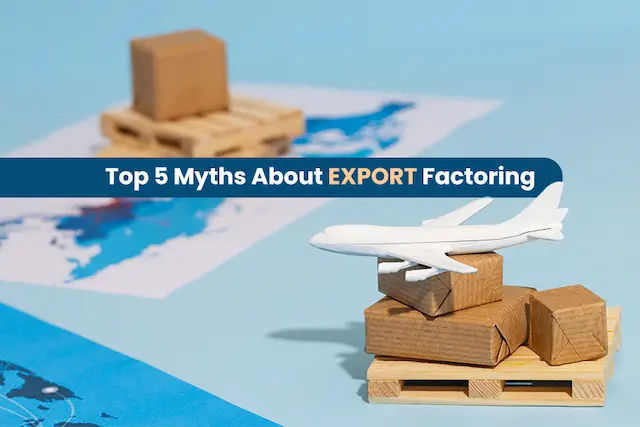Exporting goods is essential for the growth of India’s economy, and to support this, the government has introduced various schemes over the years. One of these schemes was the Merchandise Export Incentive Scheme (MEIS), designed to encourage exports by offering incentives to Indian exporters. Although this scheme is no longer in effect, it played a significant role in supporting exporters. In this blog, we will explain everything you need to know about the MEIS in very simple language.
What Is the Merchandise Export Incentive Scheme (MEIS)?
MEIS was a government initiative to promote Indian exports. The scheme helped Indian exporters by providing financial rewards, called duty credit scrips, to offset some of the costs and infrastructure challenges they faced. These incentives made it easier for exporters to sell their products globally and stay competitive in the international market.
The scheme was introduced as part of the Foreign Trade Policy 2015-2020 and was a major part of the “Exports from India Scheme.” It replaced five older schemes and simplified the process for exporters.
Key Goals of the MEIS Scheme
The MEIS scheme aimed to:
- Encourage exports: The main goal was to help Indian exporters sell more goods internationally.
- Boost employment: By promoting exports, the government hoped to create more jobs in India.
- Improve global competitiveness: The scheme helped Indian products compete better in the global market by reducing export costs.
When Was the MEIS Scheme Active?
The MEIS scheme started on April 1, 2015, and was active until January 31, 2020. However, the incentives were only applicable to goods exported during this period. The scheme was officially replaced by the RoDTEP (Remission of Duties and Taxes on Exported Products) scheme on January 1, 2021.
How Did the MEIS Scheme Work?
Under the MEIS scheme, exporters received duty credit scrips based on the value of their exports. The rewards varied depending on the products exported and the country they were sent to. These scrips could then be used to pay certain taxes or fees, helping exporters save money.
The value of the scrips was calculated as a percentage of the Free On Board (FOB) value of the goods. For example, an exporter might receive scrips worth 2% to 5% of their export value, depending on the product and country. These scrips could be used to pay custom duties, central excise duties, or even sold to other businesses for a profit.
What Were the MEIS Incentive Rates?
The incentive rates under the MEIS scheme were determined by both the product being exported and the country it was exported to. Generally, the rates were either 2%, 3%, or 5% of the FOB value. In some cases, the rate could go as high as 7%.
To find out which goods were eligible for MEIS incentives and their respective rates, exporters could refer to Appendix 3B of the Foreign Trade Policy.
How Did Exporters Apply for the MEIS Scheme?
Exporters who wanted to benefit from the MEIS scheme had to follow a simple application process:
- Fill the Online Form: Exporters needed to fill out a form called ANF-3A on the Directorate General of Foreign Trade (DGFT) website. This form had to be signed digitally and submitted online.
- Submit Required Documents: Exporters needed to submit various documents, such as shipping bills, e-BRC (Bank Realization Certificate), and other proof of landing documents, depending on whether they were exporting through EDI (Electronic Data Interchange) or non-EDI ports.
- Separate Applications for Each Port: Exporters needed to submit separate applications for each port of export, and each application could include up to 50 shipping bills.
- Keep Original Documents: Exporters were required to keep the original documents for three years after receiving their duty credit scrips. The authorities could ask to see these documents at any time within this period.
Eligibility for MEIS
Not all exports were eligible for MEIS incentives. Here are the basic eligibility criteria:
- Products: Only specific products listed in Appendix 3B were eligible for MEIS rewards.
- Country of Export: The country to which the products were exported also determined the eligibility and the incentive rate.
- Exporters: Indian exporters, including Special Economic Zone (SEZ) units and Export-Oriented Units (EOU), could apply for MEIS.
- No Turnover Criteria: There was no minimum turnover requirement for businesses to be eligible for MEIS.
- Declaration on Shipping Bills: The shipping bills had to include a Declaration of Intent, indicating that the exporter wanted to claim the MEIS incentive.
Documents Required for MEIS Application
To apply for the MEIS scheme, exporters needed to submit the following documents:
- Proof of Landing: Any document showing that the goods had arrived in the destination country, such as:
- Bill of Import (submitted by the importer)
- Delivery Order from port authorities
- Tracking Report from the shipping line or airline
- Rail/Road Receipts (for landlocked countries)
- Shipping Bills: These were essential for claiming the incentives.
- Bank Realization Certificate (BRC): To show that the payment for the export had been received.
Benefits of the MEIS Scheme
The MEIS scheme had several benefits for exporters:
- Financial Incentives: The duty credit scrips allowed exporters to offset import duties, helping them save money.
- Encouraging Exports: By reducing costs, the scheme encouraged exporters to focus on international markets.
- Focus on Specific Markets and Products: The government incentivized exports to traditional markets like the USA, Canada, and EU, as well as emerging markets like Africa and ASEAN countries.
- Support for Key Sectors: The scheme supported sectors like agriculture, textiles, handicrafts, and eco-friendly products, which were important for employment and growth in India.
End of the MEIS Scheme
The MEIS scheme was discontinued on January 1, 2021, following a notification from the DGFT. It was replaced by the RoDTEP scheme, which provides similar incentives but is structured to comply with World Trade Organization (WTO) rules.
The United States had challenged India’s export subsidy programs, including MEIS, at the WTO, arguing that they unfairly supported Indian exporters and harmed American workers. India lost the case, and the WTO ruled that the MEIS scheme violated its provisions.
To ensure that India remains compliant with international trade rules, the MEIS scheme was phased out and replaced by RoDTEP.
MEIS vs. RoDTEP: What’s the Difference?
Although both the MEIS and RoDTEP schemes provide incentives to exporters, there are some key differences:
- WTO Compliance: The RoDTEP scheme was specifically designed to comply with WTO rules, whereas MEIS was found to violate them.
- Incentive Calculation: The way incentives are calculated under RoDTEP differs slightly, and the scheme is meant to cover more taxes and duties that were not included under MEIS.
- New Sectors Covered: The RoDTEP scheme aims to cover a broader range of sectors and exports, providing more comprehensive support to exporters.
Conclusion
The Merchandise Export Incentive Scheme (MEIS) was a significant part of India’s export strategy from 2015 to 2020. It provided much-needed support to exporters by offering financial incentives that reduced export costs and encouraged international trade. Although MEIS has been replaced by the RoDTEP scheme, it played an essential role in boosting India’s exports during its time.
For exporters looking to benefit from current schemes like RoDTEP, staying updated with the latest government notifications and understanding how these programs work is crucial for success in the global market.





